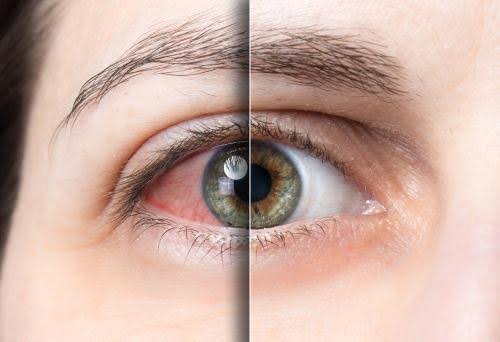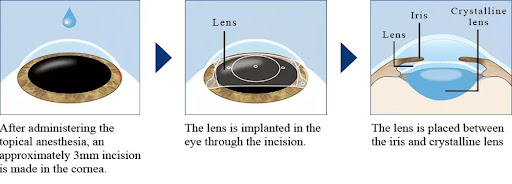An ocular concussion, or eye concussion, is a medical condition when the eye sustains a traumatic injury or impact, typically due to an external force or blow to the head or eye area. This type of injury can cause significant damage to the eye and its surrounding structures, including the optic nerve, retina, and other vital components responsible for vision.
Ocular concussion is a subset of concussions that specifically affect the eye, and they can vary in severity, ranging from mild to severe. When an ocular concussion occurs, it can lead to a range of symptoms and visual disturbances. That is why it is imperative to consult a trusted eye center such as Eyeonce Eye Clinic; our team of skilled eye doctors headed by Dr. Paik Don Won and Dr. Jung Sae Rom specializes in addressing ocular concussions and ensuring your eyesight is in the best hands.
Understanding Sjogren’s Syndrome
As mentioned, Sjogren’s Syndrome is an autoimmune disorder where the body’s immune system mistakenly attacks its moisture-producing glands. These glands, responsible for producing tears and saliva, become the primary targets of the immune response. Consequently, individuals with Sjogren’s Syndrome often experience a reduction in the quantity and quality of tears, leading to a condition known as Dry Eye.
The consequences of Sjogren’s Syndrome on eye health are profound. The immune system’s assault on moisture-producing glands directly affects the eyes, resulting in persistent and sometimes severe Dry Eye symptoms such as irritation, blurred vision, sensitivity to light, etc.
Managing Dry Eye in the context of Sjogren’s Syndrome requires a comprehensive approach, involving both medical interventions and lifestyle adjustments. To learn more about Dry Eye management in Sjogren’s Syndrome, visit Eyeonce Eye Clinic or book an appointment today!
Causes of Dry Eyes in Sjogren’s Syndrome
Dry Eyes in Sjogren’s Syndrome results from the autoimmune nature of the condition. However, there are also other key factors contributing to Dry Eyes in Sjogren’s Syndrome such as the following:
- Autoimmune Response
- Lacrimal Gland Dysfunction
- Inflammation of Ocular Surface
- Changes in Tear Composition
- Nerve Dysfunction
- Environmental Factors
- Secondary Complications
Understanding the underlying causes of Dry Eyes in Sjogren’s Syndrome is important for developing effective management strategies. While there may not be a cure for the autoimmune condition, targeted approaches and lifestyle adjustments can significantly alleviate the symptoms and enhance the quality of life for those affected.
Symptoms of Dry Eyes in Sjogren’s Syndrome
Dry Eyes in Sjogren’s Syndrome presents a range of symptoms that can significantly impact ocular comfort and visual well-being. Recognizing these signs is crucial for timely intervention and effective management. Here are the key symptoms associated with Dry Eye in the context of Sjogren’s Syndrome:
- Persistent Dryness – Individuals with Sjogren’s syndrome often experience a chronic sensation of dryness in their eyes. This persistent dryness is a hallmark symptom, indicating a deficiency in the normal production of tears.
- Gritty Sensation – A common complaint is the feeling of having something gritty or foreign in the eyes. This sensation is a result of inadequate lubrication, leading to discomfort and irritation.
- Redness – Dry Eyes can cause the eyes to appear red. The lack of sufficient tears may result in the eyes becoming inflamed and bloodshot.
- Burning Sensation – A burning or stinging sensation in the eyes is another prevalent symptom. This discomfort is often exacerbated by environmental factors such as wind or dry air.
- Excessive Tearing – Paradoxically, individuals with Dry Eyes in Sjogren’s Syndrome may experience excessive tearing. This occurs as the eyes attempt to compensate for the dryness by overproducing reflex tears.
- Blurred Vision – The compromised quality of the tear film can lead to fluctuations in vision. Individuals may experience episodes of blurred vision, further impacting their ability to see clearly.
- Difficulty Wearing Contact Lenses – Dry Eyes make it challenging for individuals to wear contact lenses comfortably. The lack of adequate moisture can lead to discomfort and intolerance to the lenses.
- Light Sensitivity (Photophobia) – Dry Eye in Sjogren’s Syndrome may contribute to heightened sensitivity to light. Exposure to bright lights can intensify discomfort and cause photophobia.
- Eye Fatigue – Prolonged dryness and discomfort can result in eye fatigue. Individuals may find that their eyes tire easily, especially after activities that require prolonged focus, such as reading or using digital screens.
Recognizing these symptoms is the first step toward effective management. Seeking guidance from eye care professionals, such as those at Eyeonce Eye Clinic, ensures a thorough evaluation and tailored strategies for addressing the specific challenges posed by Dry Eyes in the context of Sjogren’s Syndrome.
Targeted Approaches to Address Dry Eyes in Sjogren’s Syndrome
Managing Dry Eyes in Sjogren’s Syndrome involves a multi-faceted approach aimed at alleviating symptoms and improving overall ocular health. Eyeonce Eye Clinic, with its specialized care and expert eye doctors, offers tailored strategies to address the specific challenges posed by Dry Eyes in individuals with Sjogren’s Syndrome. Here are key targeted approaches:
- Lubricating Eye Drops – Lubricating eye drops provide artificial tears to compensate for the reduced natural tear production.
- Anti-inflammatory Medications – Medications that reduce inflammation can help manage the chronic inflammation associated with Sjogren’s Syndrome, contributing to Dry Eyes.
- Punctal Plugs – Punctal plugs are small devices inserted into the tear ducts to block drainage. This helps retain natural tears on the ocular surface for a longer duration.
- Intense Pulsed Light (IPL) Therapy – IPL therapy addresses meibomian gland dysfunction, a common secondary complication in Sjogren’s Syndrome, by improving the function of these glands.
- Warm Compresses and Lid Hygiene – Warm compresses and lid hygiene routines help manage meibomian gland dysfunctions and ensure the proper secretion of oils in the tear film.
- Prescription Medications – Prescription medication, such as cyclosporine eye drops, may be recommended to modulate the immune response and promote a more stable tear film.
- Environmental Modifications – Environmental adjustments, including using humidifiers and protective eyewear, can mitigate external factors contributing to Dry Eyes.
- Regular Eye Examinations – Regular eye examinations, conducted by skilled professionals at Eyeonce Eye Clinic, allow for ongoing assessment of Dry Eye symptoms and adjustments to the treatment plan as needed.
Eyeonce Eye Clinic, led by eye doctors Paik Dong Won and Jung Sae Rom, prioritizes a patient-centered approach, tailoring treatments to individuals’ needs. With a focus on expertise and compassionate care, Eyeonce Eye Clinic aims to enhance the quality of life for individuals managing Dry Eyes in the context of Sjogren’s Syndrome.
Why choose Eyeonce Eye Clinic Gangnam for Dry Eyes in Sjogren’s Syndrome treatment?
Utmost Patient Care
Our eye care professionals and staff ensure to give you your money’s worth. We guarantee you receive the best medication possible and assure you that you are guided and understood, making you feel comfortable and confident at every step.
Comprehensive Consultation
Eyeonce Eye Clinic offers comprehensive eye examinations to evaluate your condition and determine the best eye strain treatment. Our ophthalmologists take their time to cater to your questions and address your concerns, ensuring you make an informed decision about our vision correction options.
Expert Eye Doctors
Our ophthalmologists, Head Director Dr. Paik Dong Won and Medical Director Dr. Jung Sae Rom, are highly knowledgeable and adept in treating eye strain. They always use the latest techniques and technologies to ensure optimal results.
Frequently Asked Questions (FAQs)
Dry Eye in Sjogren’s Syndrome is typically managed rather than cured. Effective management strategies can significantly improve symptoms and enhance the quality of life.
While severe cases may impact vision, timely diagnosis and effective management significantly reduce the risk of vision loss.
Consult with an eye care professional for personalized recommendations on suitable lubricating eye drops tailored to your specific needs.
Conclusion
Understanding and effectively managing Dry Eyes in Sjogren’s Syndrome is pivotal for individuals traversing the challenges posed by this autoimmune condition. However, with the targeted approaches and the expertise of the ophthalmologists at Eyeonce Eye Clinic, you will surely find relief from Dry Eyes. Book an appointment with them now!



